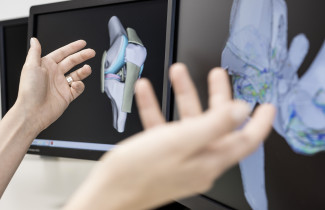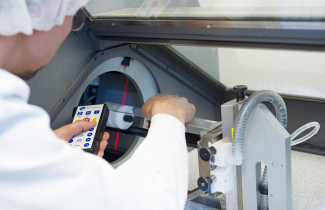The doctoral dissertation in the field of Biomedical Imaging will be examined at the Faculty of Health Sciences at the Kuopio Campus.
What is the topic of your doctoral research?
Diffusion magnetic resonance imaging (diffusion-MRI) is a tool that can be used to infer microstructural properties of the living tissue non-invasively. This is achieved through measuring signal from the temperature-induced random motion of water molecules. It is already established that diffusion-MRI can detect disease- and injury-induced changes that are not detectable by other methods, such as anatomical MRI or CT. The problem with the methods is that the information gained from diffusion-MRI cannot be used to infer the cellular microstructure of the region of interest.
In this work we investigated the ability of diffusion tensor imaging (DTI) to detect progression of disease model-induced microstructural changes in the rat brain and used histology to detect the actual cellular level changes in the tissue. As diffusion-MRI is inherently three-dimensional (3D), we introduced serial block scanning electron microscopy (SBEM) to assess 3D brain tissue microstructure at the second stage. The particular advantage of SBEM is that it can be used to image cellular membranes that are the primary diffusion restrictors in the tissue, thus allowing for developing more accurate models for the distribution of the diffusion in the region of interest. To assess the connection between the tissue microstructure and diffusion-MRI signal, we acquired data from the diffusion-MRI from the same tissue samples and investigated the connection.
What are the key findings or observations of your doctoral research?
Our research confirmed that DTI can be used in detecting status epilepticus-induced changes rather early in the rat hippocampus and that the changes observed are associated with myelinated axons as well as astrocyte processes in the tissue.
We imaged several small regions of interest in the rat brain using both SBEM and diffusion MRI. In this work, we were able to see that diffusion MRI works on the white matter in a sense that it detects the direction of the tissue structures as well as the anisotropy or dispersion of the tissue. In the grey matter, the connection between the diffusion MRI metrics and the underlying tissue microstructure is more complicated. The diffusion MRI methods detect signal from the grey matter areas but cannot model the phenomena in finer detail.
SBEM has excellent contrast for diffusion-restricting tissue membranes, it can be used in segmenting tissue components and in finding deeper understanding of the diffusion MRI mechanism in the future.
The study was in part a collaboration project of two research groups, one at UEF and one at Helsinki University. This was about advanced imaging in MRI and electron microscopy and mathematical analyses of the data.
The doctoral dissertation of Raimo Salo, MSc, entitled Advanced microscopic validation of diffusion MRI in rat brain will be examined at the University of Eastern Finland. The Custos in the public examination will be Associate Professor Matthew D. Budde of the Medical College of Wisconsin, and the Custos will be Research Director Alejandra Sierra López of the University of Eastern Finland.



